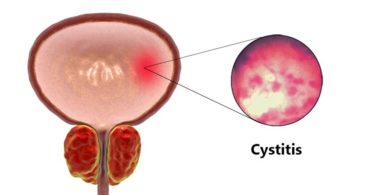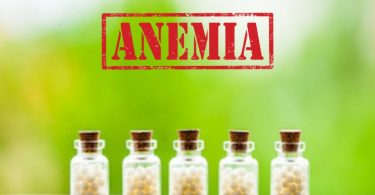Abstract
Common cold can be well treated with homeopathic medicine. It is important to remember that there are no homeopathic specifies for the common cold, only remedies for the patient who suffers from it. Because patients can have completely different symptoms of the common cold and their treatment depends upon particular symptoms that each of them experiences. It is imperative to remember that each patient must be treated as a unique individual. Depending upon susceptibility, the dosage and repetition differ from each person.
Keywords
Common cold, Individualization, Miasm, Selection of medicine.
Introduction
The common cold is a viral infection of the upper respiratory tract. It usually lasts approximately 7 days. There is more than 200 virus associated with it. Season of the year especially change of weather, rainy season, age group are important factors in the type of virus causing the infection. There are no major gender or ethnicity differences in incidence. Most of the infections occur in the winter period. A US study found that 23.6% of adults have experienced a cold in 4 weeks. Children get 6-8 cold per year and adults get 4-6 cold per year. (1)
Etiology
The common cold is a viral infection of the upper respiratory tract. The following virus is responsible associated with other factors like change of climate, seasons, immunity, susceptibility. Nowadays, Air pollution is one of the most important factors for the common cold, if the Air Quality Index (AQI) within 100 then it is satisfactory but above it affects human health.
- Rhinovirus-50%
- Coronavirus-15%
- Influenza virus-15%
- Adenovirus-10%
- RSV-5%
- Parainfluenza virus-5% (1)
Mode Of Transmission
There are 4 major routes of transmission, these are- 1) Droplet infection, 2) Sharing contaminated objects, 3) Contaminated food, 4) Smearing of nasal.
Risk Factors
1. Debilitating disease.
2. Overcrowding places.
3. History of contacts.
After infection from the virus subsequent bacterial infection by Pneumococci, Streptococci and Staphylococci may develop. Normally, the Incubation period is 24-48 hours. (2)
Clinical Features
Symptoms of common cold are as follows:
1. Fever with cough and cold.
2. Sneezing.
3. Sore throat.
4. Runny nose.
5. Headache.
6. Fatigue.
7. Nasal congestion.
8. Bodyache.
9. Loss of appetite. (3 p. 525) (Figure-1)
Progression: Common cold begins with fatigue, a feeling of being chilled, sneezing and headache followed by running of nose and cough with fever. (Figure-2)
In children, the cough lasts for more than 10 days in 35-40% cases.
Prognosis
The common cold is generally mild with most symptoms generally improving in a week. Half of the cases go away in 10 days and 90% in 15 days.
Complications
The complications if they occur are usually in the very old, the very young, or those who are immunosuppressed. Complications are:
1. Sinusitis (8% cases)
2. Pharyngitis.
3. Ear infections (30% cases), etc.
Prevention
Prevention is better than cure. In common cold required proper management and preventive measure, these include:
- Cover your mouth and nose with a tissue when you cough or sneeze.
- Stay at home when you sick.
- Cough or sneeze into your upper sleeve, not your hand.
- Put used tissues in the wastebasket.
- Avoid cold exposure.
- Take a sufficient amount of water or vitamin C fruit which enriches your immunity.
Physical Intervention
67 studies various types of Randomized control trials, cohort study, case-control studies, various techniques used like-hand washing/use of alcohol-based disinfectant/masks/gloves reduce the risk of the common cold. (1) Zinc supplements Cochrane review of the prophylactic efficacy of orally administered(10-15mg). (1)
Homeopathy In Common Cold
According to ORGANON OF MEDICINE,
Sec-73, As regards acute diseases, they are either of such a kind attack human being individually, the exciting cause being injurious influences to which they were particularly exposed……..Chills, overheating….are exciting causes of such acute febrile affections……. (4 p. 67)
Homeopathy treats the man in disease. So, when a person with fever comes he is treated on the basis of acute totality- onset, types of fever, a succession of stages of fever, modality, thermals, thirst, general activity. Apart from these ailments, physical (chills, overheating….), mental emotions…. (Hahnemann, 2013, p. 67)
Sec-77, Maintaining cause is the important factor which must be removed, and for the treatment of pseudo chronic disease. As for example-reside unhealthy localities, marshy districts…..overexertion of body and mind…… (4 pp. 69-70)
Sec-83, Individualizing examination of a case of disease…… (4 p. 73)
Diet and Regimen
Sec-263, The desire of the patient affected by an acute disease with regard food and drink is certainly chiefly for things that give palliative relief………the room and the heat or coolness of the bed-covering……with the patients wish……….. (4 p. 132)
According to Stuart close, Susceptibility is one of the fundamental attributes of life. Upon it depends on the functioning of all vital processes. (5 p. 76)
REPERTORIES OF FEVER
There are many repertory which includes FEVER chapter where we can find out a different group of remedies and how we applied as per availability of symptoms, these are:
1. THE THERAPEUTICS OF FEVER– Dr H.C. ALLEN (1879) The author states that it is the patient not the fever that is chiefly and especially is considered. The remedy was selected from the totality of the objective, subjective and miasmatic symptoms. (6 p. 358). Many repertories have given separate chapters of fever like Kent’s repertory/B.T.P.B/ Complete repertory, etc….
But in B.B.C.R., Fever totality is the unique contribution of Dr Boger. The arrangement of the chapter is self-explanatory. Each stage of fever followed by TIME/AGG./AME./CONCOMITANT. (6 pp. 552-557)
Review Article on Viral Infections
Over the years the incidence of communicable diseases has reduced but viral infections especially influenza is on the rise. It is caused by different strains of the virus that produce symptoms with some variation and is better known as Influenza-like illness (ILI). Even the World Health Organization (WHO) has set up National Influenza Centres in the Western Pacific and South-East Asian regions for its surveillance. Homeopathic practitioners successfully manage cases of ILI in their routine practice, they use centesimal as well as LM potencies with variable success. (7) In order to elicit the healing properties of medicine according to the principle of similitude, homeopathy employs human experimentation known as homeopathic pathogenetic trials (HPTs) as its model of clinical pharmacological research. HPT takes into account all kinds of primary actions or pathogenetic manifestations (mental and physical generals, and local symptoms) elicited by drugs on the state of health of human beings. In this issue, we present HPT on Gymnema sylvestre, a herb commonly found in central India and is widely used for diabetes mellitus. However, from the symptoms produced during the HPT, this drug seems to be useful in clinical conditions such as headache, vertigo, common cold, cough, diarrhea, etc. Further, clinical verification is desirable to explore its therapeutic potential. (7) Homeopathic Therapeutics
There is a large number of medicine for the common cold. These include:
- Aconite napellus, Allium cepa, Belladonna, Bryonia alba, Cactus grandiflourus, Chamomilla, Cina maritime, Dulcamara, Ferrum phosphorica, Gelsemium sempervirens, Hepar sulphuricum, Mercurius solubilis, Phosphorus, Pulsatilla nigricans, Rhus toxicodendron, etc. And nosode like-Influenzinum which acts as a prophylactic.
Few medicines with their characteristic of symptoms, these are→
1. Aconite napellus- Great fear and anxiety of mind/ skin dry and hot with a burning thirst for large quantities of cold water/complaints from dry cold air, dry north and west wind/cough on expiration. (8 p. 4)
2. Allium cepa- Catarrhal dull headache with coryza˂in the evening˃in open-air/coryza profuse watery and acrid nasal discharge. (8 p. 14)
3. Arsenicum album- Mentally restless but physically too weak to move, can’t rest in one place/great thirst for cold water: drinks often, but little at a time: eats seldom, but much/˂midday, midnight, ˃ heat in general. (8 p. 42)
4. Bryonia alba- Ailments from when warm weather sets in, after cold days, after taking cold or getting hot in summer, from chilling, overheated/dryness of mucous membrane /grat thirst for large quantities at long intervals/˂motion˃absolute rest. (8 p. 65)
5. Belladonna- Violent delirium, hallucination/great liability to take cold/congestive headache with red face, eyes, throbbing of carotid/dryness of mucous membrane. (8 p. 55)
6. Pulsatilla nigricans- Weeps easily,˃consolation/grat dryness of mouth with thirstlessness/nasal discharge thick, bland,yellowish-green. (8 p. 250)
7. Rhus toxicodendron- Bad effects of getting wet after being overheated/restlessness, can’t stay long in one position/great thirst with dry tongue(triangular red tip, an imprint of teeth)/˂cold, during rest˃warm, motion. (8 p. 259)
Important Rubrics with 1st & 2nd-grade medicines from Kent’s Repertory
- CORYZA,sore throat,with – Carb-an.,Calc-p.,Lach.,Merc.,Nit-ac.,Nux-v.,Phos. (9 p. 328)
- CORYZA, motion amel – Dulc.,Rhus-t. (9)
- CORYZA, fever with – Aco.,Ars.,Bell.,Gels.,Bry.,Merc.,Hep.,Seneg. (9)
- CORYZA, wind, caused by dry cold – Acon. (9 p. 329)
- CATARRHAL,fever – Acon.,Ars.,Bry.,Ferr-p.,Hep.,Kali-i.,Merc.,Rhus-t.,Sabad. (9 p. 1282)
- CHANGING, not two paroxysms alike – Puls. (9 p. 1282)
- FEVER, CHILLINESS, with – Apis.,Calc.,Coff.,Kali-bi.,Puls.,Thuj.,Verat. (9 p. 1284)
- COUGH,Fever during – Aco.,Ars.,Calc.,Con.,Ip.,Kali-c.,Nat-m.,Nux-v.,Phos.,Sabad. (9 p. 791)
- FEVER, Changing paroxysm after abuse of Homoeopathic potencies – Sep. (9 p. 1282)
- FEVER,chill absent – Apis.,Ars.,Bell.,Bry.,Cham.,Gels.,Rhus-t. (9 p. 1283)
Time Modality(Fever) with Medicines in Kent’s Repertory→
- FEVER, 9 am-Am-c., Cham. (9 p. 1278)
- FEVER, 5 am followed by shaking chill-Apis. (9 p. 1278)
- 9 am and 5 am-Kali-c. (9 p. 1278)
- 1 to 4 pm with severe headache-Lac-ac. (9 p. 1279)
- 11 am with thirst and chilliness-Sil. (9 p. 1278)
- 2 pm-Puls./followed by chill at 4 pm-Puls. (9 p. 1279)
- 4 to 8 pm-Hell., Lyc. (9 p. 1279)
- Burning heat, 9 am to 12 noon-Cham. (9 p. 1282)
There are so many medicines that help to treat that kind of viral infection with similimum. In such treatment the patient least harmful and acts as a preventive also.
Conclusion
Common cold is nothing but the immune-mediated viral infection. Higher rates occur in humid, crowded conditions, change of weather, rainy season. Homeopathic treatment provides safe and quick relief in common cold. But along with medicine, the patient needs adequate rest, take a sufficient amount of water, nutritious diet, avoiding cold exposure. The homeopathic treatment acts as a whole of the patients which removes external problems as well as internal and gives patients well-being in the quickest time.
Bibliography
1. Prevention and treatment of the common cold: making sense of the evidence. Micheal, G Allan, and Bruce, Arroll. 2014, Canadian Medical Association journal,www.ncbi.nlm.nih.gov.
2. P.C Das, P.K Das. Textbook of MEDICINE. Textbook of MEDICINE. KOLKATA: CURRENT BOOKS INTERNATIONAL, 2009, p. 92.
3. Davidson. Principles and Practice of Medicine. Principles and Practice of Medicine. New York: Churchill Livingstone, 2002, p. 525.
4. Hahnemann, Samuel. Organon of Medicine. Kolkata: Modern Homoeopathic Publication, 2013.
5. Close, Stuart. The Genius of Homoeopathy. New Delhi: B.Jain Publishers(P)Ltd, 2017.
6.Tiwari Shashikant. Essentials of Repertorization. New Delhi B.Jain Publishers(P)Ltd., 2016.
7. Homoeopathy in Influenza-like illness. R.K. Manchanda. 29/06/2013, Indian journal of research in Homoeopathy, pp. Vol-7, page-1-2.
8. ALLEN HC. Keynotes rearranged and classified with leading remedies of the Materia Medica and Bowel Nosodes. New Delhi: B.Jain publisher(P)Ltd, 2013.
9. J.T. Kent. Repertory of the Homoeopathic Materia Medica. Repertory of the Homoeopathic Materia Medica. KOLKATA: RUP PUBLICATION, 2013-14, p. 328.





